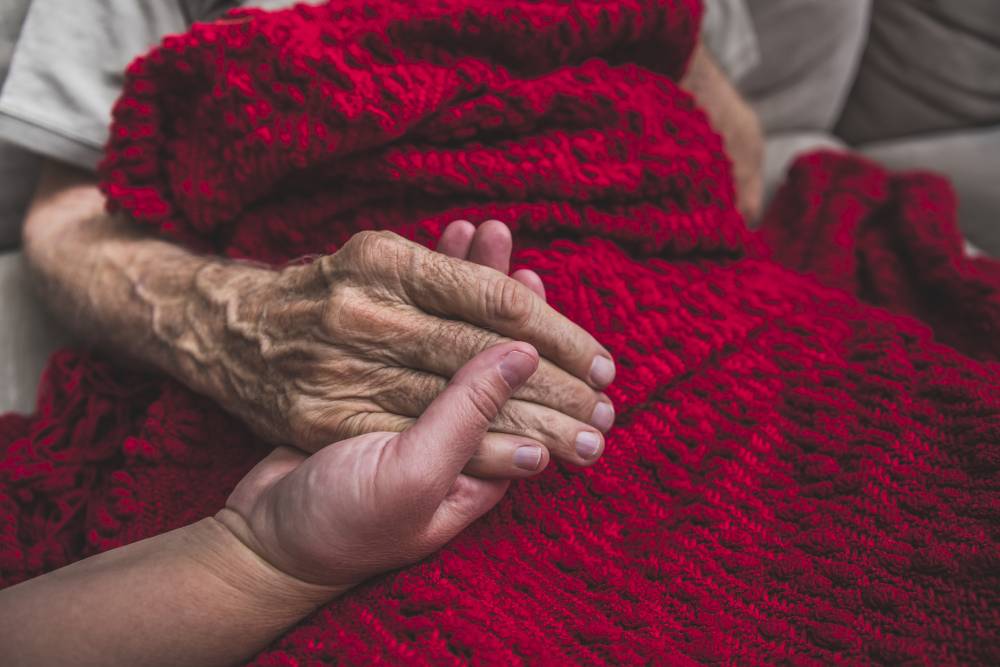
Those who have lived experience of palliative care should be involved in designing and evaluating services, says the author of a new research paper.
Australian society, by and large, is not comfortable talking about death, and it follows that we are also uncomfortable having conversations about palliative care.
New research from the Australian National University has revealed failings in our palliative care system that stem largely from our reluctance to talk about the topic.
“There is still a stigma around talking about death,” lead author of the research, Dr Brett Scholz, told HelloCare.
“Often in our society, we want to deny death and we don’t want to talk about it because it’s stigmatised,” he said.
“The dominant discourse is ignoring palliative care,” he said, which could mean users are missing out.
Dr Sholz has reviewed the extent to which consumers and carers are involved in the design of palliative care services, finding there wasn’t a great deal of involvement.
“Unfortunately we didn’t find as much as I’d expected and hoped for. I expected a lot more engagement,” he told HelloCare.
Dr Scholz believes consumers – those with lived experience of caring for someone in their dying days – should play a greater role in the designing of palliative care services.
“If services were shaped by consumer and carer voices, if that lived experience perspective was brought into the design of our services we are offering, how we deliver them, how we implement them, how we evaluate them, then that would mean that current carers would potentially be more empowered,” he said.
He said the aim is to demystify palliative care services and to give carers greater capacity to make decisions.
“I think we need to start with demystifying palliative care by including consumer and care voices in everything we do, and that might have a flow-on effect for families,” he said.
Dr Sholz said the concern that carers aren’t interested in contributing to how palliative care services are offered is misplaced.
“There were all these assumptions about consumers and carers not wanting to be involved,” he said, but on closer examination he found consumers had not actually been asked if they wanted to have a say.
Dr Scholz said he would like to see consumers embedded in the decision-making structures of organisations delivering palliative care services.
“I would like to see a requirement that consumers be part of decision making structures. I would like to see there was board representation of people who’d actually gone through those services, or people who’d cared for people going through those services,” he said.
And not just at the top of organisations, he said, but at every level, from top to bottom.
Dr Scholz said a good example of a way that consumers can improve palliative care services is in the design of a room. If someone has cared for a loved one in their final days, they might have a view about what they needed in the room. For example, do they need seating and lighting and a space of their own they can use when their loved one is receiving clinical care?
“When we’re not involving consumers, we’re missing out on a lot of important information such as the little practical things that couldn’t come from anyone else, that could only come from people who’d experienced that service and understood what it’s like to be in those rooms.”
Dr Scholz is now interviewing people to find out why consumers aren’t more involved in developing palliative care services.
“What I hope is this paper will lead us to understand how can we overcome the barriers, and how can we ensure this becomes standard practice.”
He hopes that whenever a new palliative care service is started, or whenever a service is evaluated, that consumers are involved.
“So it’s not just health professionals talking to each other, it’s consumers and carers being involved every step along the way.”
Our experience was very traumatic. We were told, with palliative care, my mother would have no pain and probably die within 3 days. She died from dehydration and starvation over a period of 14 days. The skin in her mouth was rock hard. Swallowing was impossible for her. She was semi conscious for the first few days and eyes stayed open all the time. Her feet hurt. She kept pulling away from them. Staff dared not give more morphine because that would have been illegal so she died a slow cruel death.
Thank you Doctor Scholtz, there is Hope
Dr Sholz needs huge amounts if media coverage
My mother’s Time in palliative care was OK but I had worked in aged care and nursed the dying but for others it must be dreadful
There should be a time limit, it has already been determined that the person is going to die, so why prolong the agony fir everybody involved
I am so sorry to hear what you and your mother went through. I firmly believe that palliative care needs improvement. The whole idea of palliative care is that pain is managed well. There is no need for people to die in physical and mental distress. People in the community need to know their rights and to get an understanding of what is available…particularly when medical staff are not willing to advocate for the person suffering in their death.
This research reminds me of research Dr Jan Browne and I did in 2004: “Talking about dying: where and how we choose to die” http://www.research-matters.com.au/publications/DyingReport.pdf
I am shocked to learn there has been such little progress over past 15 years!
Very true. Careers should BE the voice in designing care.